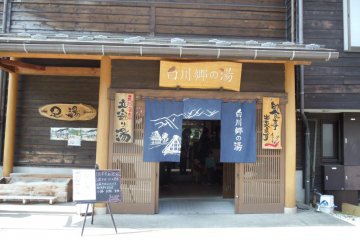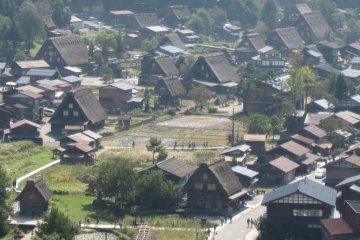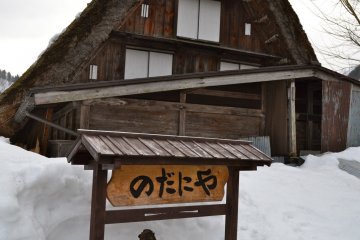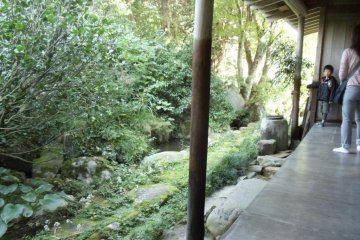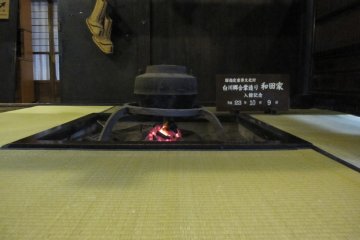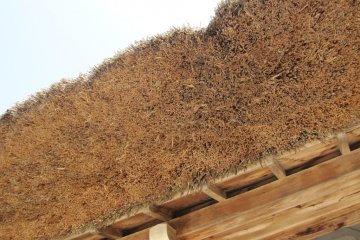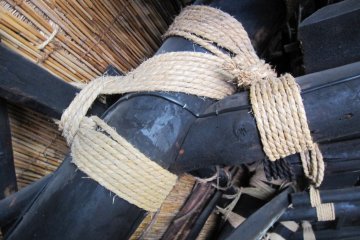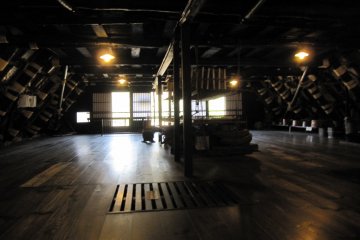While walking down the main road in Shirakawa-go I came to Wada house. Most of the gassho houses are not museums but actually family homes. Wada house is part family home and part museum. It is also one of the largest gassho homes in the village.
I walked off the road and down the crushed pebble path laced by a field of wildflowers on one side and a small stream on the other to the front entrance. Getting a close-up view of the heavily intertwined dried rice stalks that make up the eves, a method that has been followed for centuries, is astounding. Thatched roofing has been used all over the world since the first human builds a hut on the open savanna but to see such a thing in such fantastic condition a modern nation boggles the mind.

I took off my shoes, put on slippers and paid my entrance fee. To my surprise, the main room was not what I had suspected. In many traditional Japanese homes, the ceilings are low and rooms can be easily closed off to conserve heat or open to cool them off. The main room of the Wada house was a vast hard-wood floored area with a small tatami corner with an irori. On the left side, there were some display cases featuring the family’s traditional lacquer ware and prized possessions. I proceeded to follow the other visitors to the two back rooms, one of which opened into a small garden with a deck to relax and take tea. The other was holding the family butsudan or family shrine. This is how you can tell that it is actually still used. If a family moves to a new home, they take the butsudan with them but since the Wada family still lives in the house, the butsudan stays.
After a few minutes of enjoying the garden, I walked back to the main room where a guide was giving a brief history of the house and family.

The Wada house became a national treasure in 1995 due to its size and age of around 300 years old. During the Edo period, it played the role of the mayoral house, silk production facility and commerce office. The explained the construction of the house as well. I found the foundation explanation quite surprising. It took four years to prepare as it was made using dirt, grass, silkworm feces and human urine! These were mixed together and eventually, after four years, the house could be constructed.
The next stop was the second floor. There is only one very steep stairs going up to the second floor. It is difficult enough to go upstairs like this with no one around but with dozens going up and down at the same time is a little scary. But there is a small first-and a half-floor room with old silk and farming equipment which many seemed to ignore. I had expected the second floor to be living quarters like in American praire homes but no; this is where silk production took place. There is one large room with examples of tools and the silk preparation process. For me, the silk didn’t catch my eye as much as the large ropes binding enormous timbers to construct the frame of the house. It reminded me of “Lincoln logs” I had played with as a child.
After looking out the windows at either end and admiring the architecture, I ventured back down to the first floor and out to enjoy the sunny day and the surrounding mountains. Wada house is a must for Shirakawa-go not just because it is a national treasure but because it offers an excellent example of traditional architecture, culture and history.



